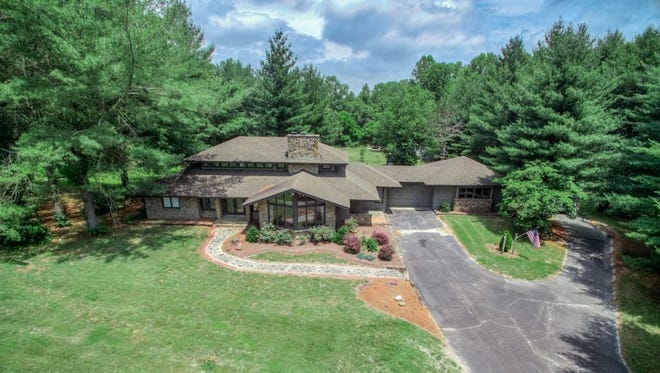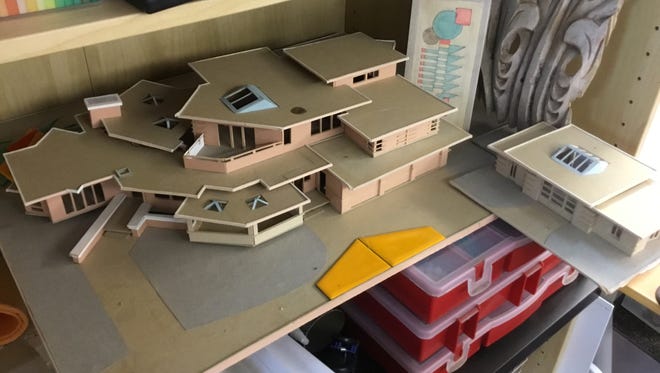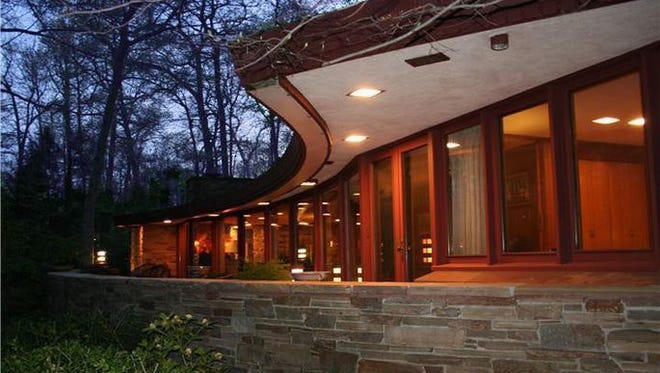These homes are a window into post-World War II history

In 1956, when Wanda and William Powell decided to build a home in Ocean View, they chose a modern, single-story design.
Likewise, when Jim and Jackie Rifenbergh were preparing a move to Lewes from Minnesota, local architect John Lester was asked to design a home reminiscent of the work of the legendary Frank Lloyd Wright.
In both instances, those homes reflect an architectural style that was part of a design revolution known as "mid-century modern."
And, after years of being ignored, historians are now starting to recognize the importance of the mid-century modern movement.
In fact, Delaware now has several mid-century modern homes listed on the National Register of Historic Places with others under consideration.
"For mid-century modern, there was, for a long time, a lack of recognition," said Catherine Morrissey, assistant director of the University of Delaware's Center for Historic Architecture and Design.
Architectural historians say the mid-century modern movement began in earnest after World War II and continued well into the 1980s.
"The beginnings of modernism happened post-war and it just exploded," said Michael Emmons Jr., architectural historian at University of Delaware's Center for Historic Architecture and Design.
Indeed, though the movement may have initially surfaced in trend-setting California, it was not long after the war when those modernistic homes started appearing in Delaware.
"Growing up in the '60s, when they first appeared in Sussex, I can remember associating them with the fast lane lifestyle of California," said Russ McCabe, retired state archivist.

Though design elements vary, many mid-century homes are generally single story and have pronounced geometric lines. Flat roofs are common. And the homes also feature large windows and multiple interior elevation changes.
"These homes typically featured clean lines, were very horizontal, featured lots of windows — to blend inside spaces with nature — and had open floor plans," Emmons said.
Those typical features are certainly found in two mid-century modern homes in New Castle County that are listed on the historic register.
And those signature features are prevalent in "Laurel" — the only house in Delaware that was designed by the legendary architect Frank Lloyd Wright. It was placed on the historic register in 1975 and was one of the last houses Wright designed before his death.
"Frank Lloyd Wright utilized local materials, to create a balance between living space and the outdoors," said Morrissey. "The idea is, that it is conceivable that these houses 'sprung up' from the earth."
The other prominent historic register example is a home in Rockland called "901." The New Castle County home was built in two phases — 1950 and 1973.
The original section of the Durham family home was featured in Better Homes & Gardens in 1955.

In Lewes, Jackie Rifenbergh said they started their Delaware home search by having a Realtor show them properties on the market.
They found nothing.
"We were looking for something contemporary and modern, in the Frank Lloyd Wright style," she said.
After fruitless searching, the Realtor suggested building their own home and he introduced them to Lewes architect Lester.
Lester said it did not take much coaxing from the Rifenberghs to design them a home reflecting the work of Frank Lloyd Wright.
"It was what I liked, I liked Frank Lloyd Wright," Lester said.
Rifenbergh said they were still living in Minnesota and apprehensive about building a new house when they were too far away to oversee the construction.
But Lester reassured them and even built a model so they could see a three-dimensional version of his architectural plans.
Eventually, they moved to Delaware and lived in a rental until their new house was finished.
READ MORE: Rehoboth's $21 million City Hall built on land without a deed
"I don't know if Frank Lloyd Wright would appreciate it, but we built this house in honor of him," she said.
Plus, Rifenbergh said, "people who have seen it says it looks like a Frank Lloyd Wright house."
Even now, the Rifenberghs enjoy their home, especially the large windows.
"During the day, the sun sort of follows us around," she said.
While southern Delaware has multiple examples of mid-century modern architecture, a fair number of them are vacation homes.
Architect Mark Redden said some of the mid-century modern beach houses are in Rehoboth Beach but the biggest concentration is a little to the south.
"There are a ton of them in Middlesex Beach", he said.

Middlesex Beach, an unincorporated community, straddles Route 1 at the southern end of Bethany Beach.
In Ocean View, Wanda Powell said they decided to build their own home and she wanted a modern, single-story design.
"I grew up in a two-story house, and I decided I wanted a one-story home," she said.
The couple also decided to design and build their new home with help from subcontractors.
Powell said she worked with the Selbyville Manufacturing Co. to develop the blueprint. Then she decided to be the contractor on the build.
So, with her husband at work every day, she hired carpenters, plumbers, electricians, masons and other subcontractors to do the work.
She also had redwood shipped by rail from California for the siding and stone from Tennessee for the fireplace.
She said the only delay was, the rail car carrying siding from California got lost and construction stopped until it was located.
READ MORE: Sussex officials wrestle with roads that can't handle increasing traffic
They began construction in 1956 and moved in on Valentine's Day, 1957.
Though her husband died in 2005 and their two children moved out long ago, Wanda Powell continues to live in the same house.
"I have never, ever changed anything," she said.
And Powell still appreciates the single-floor design.
"As I am approaching 90, I am glad I did that," she said.
While many mid-century modern homes in Delaware have been demolished or significantly altered, historians are beginning to see the importance of preserving the remaining examples of the era.
"We do need to work at preserving them," said Emmons.
raetyson@gmail.com